by Maj John F. Schmitt, USMCR
Situation
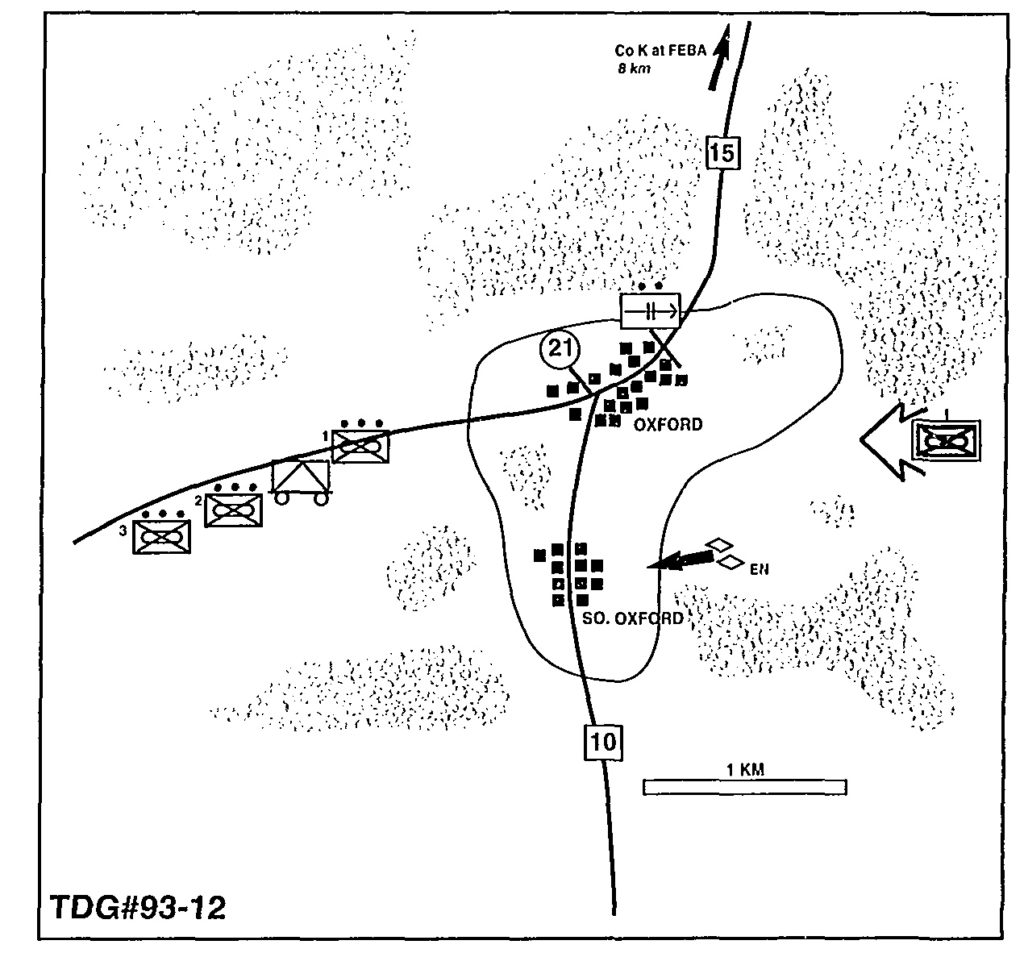 You are the executive officer of Company L (Lima), 3d Battalion, 7th Marines. You are operating in rolling, wooded terrain. Vehicles move best on the roads, not at all in the woods, the battalion is presently on the defensive, currently in reserve, your company is moving northeast via Oxford to conduct a relief in place with Company K (Kilo) at the forward edge of the battle area about 8 kilometers north of Oxford. Your coinpany is mounted on assault amphibious vehicles (AAVs) and is further reinforced with a Dragon section, a TOW squad, and a heavy machinegun section (one M2 .50 caliber, one Mk19) on HMMWVs. Upon arrival the tank platoon currently supporting Kilo will be attached to your company. The company commander and first sergeant have already gone to Kilo’s position by helicopter to see the terrain and coordinate the relief. You are responsible for moving the company up to the forward edge of the battle area. The company gunny and the machinegun vehicles have driven ahead as an advance party.
You are the executive officer of Company L (Lima), 3d Battalion, 7th Marines. You are operating in rolling, wooded terrain. Vehicles move best on the roads, not at all in the woods, the battalion is presently on the defensive, currently in reserve, your company is moving northeast via Oxford to conduct a relief in place with Company K (Kilo) at the forward edge of the battle area about 8 kilometers north of Oxford. Your coinpany is mounted on assault amphibious vehicles (AAVs) and is further reinforced with a Dragon section, a TOW squad, and a heavy machinegun section (one M2 .50 caliber, one Mk19) on HMMWVs. Upon arrival the tank platoon currently supporting Kilo will be attached to your company. The company commander and first sergeant have already gone to Kilo’s position by helicopter to see the terrain and coordinate the relief. You are responsible for moving the company up to the forward edge of the battle area. The company gunny and the machinegun vehicles have driven ahead as an advance party.
The company commander calls you by radio to report that Kilo is coming under increasing pressure to the front from enemy probes. He frags you to move the company as quickly as possible into a blocking position at a designated location several kilometers to the rear of Kilo (5 kilometers north of Oxford) and to prepare for a rearward passage of lines rather than a relief in place. He says the tanks will meet you at that position and will come up on the company tactical net. You are about a mile west of Oxford. The forward observer tells you that somebody is calling for fire east of Oxford using your company call sign. Simultaneously, the gunny comes up on the tactical net with the following report:
Checkpoint 21. Enemy force at least company strength closing on Oxford from the east inside two clicks. I count five PT-76 followed by at least that many BTR-60. Looks like more coming. No sign of friendlies to east. Two BRDMs approaching South Oxford from east; will reach high ground in about two or three mikes. I have not been spotted.
What now, Lieutenant?
Requirement
Things are happening fast. In a time limit of 3 minutes, issue instructions to your subordinates. In an additional 2 minutes, decide what reports to make and to whom. Provide an overlay of your solution and a brief discussion of the rationale behind your actions. Submit your solution to Marine Corps Gazette, TDG #93-12, P.O. Box 1775, Quantico, VA 22134.
Quote to Ponder
The Small Unit Leader
On the maneuver warfare battlefield, NCOs must make decisions based on tactics, not just rigidly applied techniques. . . . “[they] must learn to cut to the heart of the situation, recognize its decisive elements, and base [their] course of action on these.”
-Capt Daniel J. O’Donohue




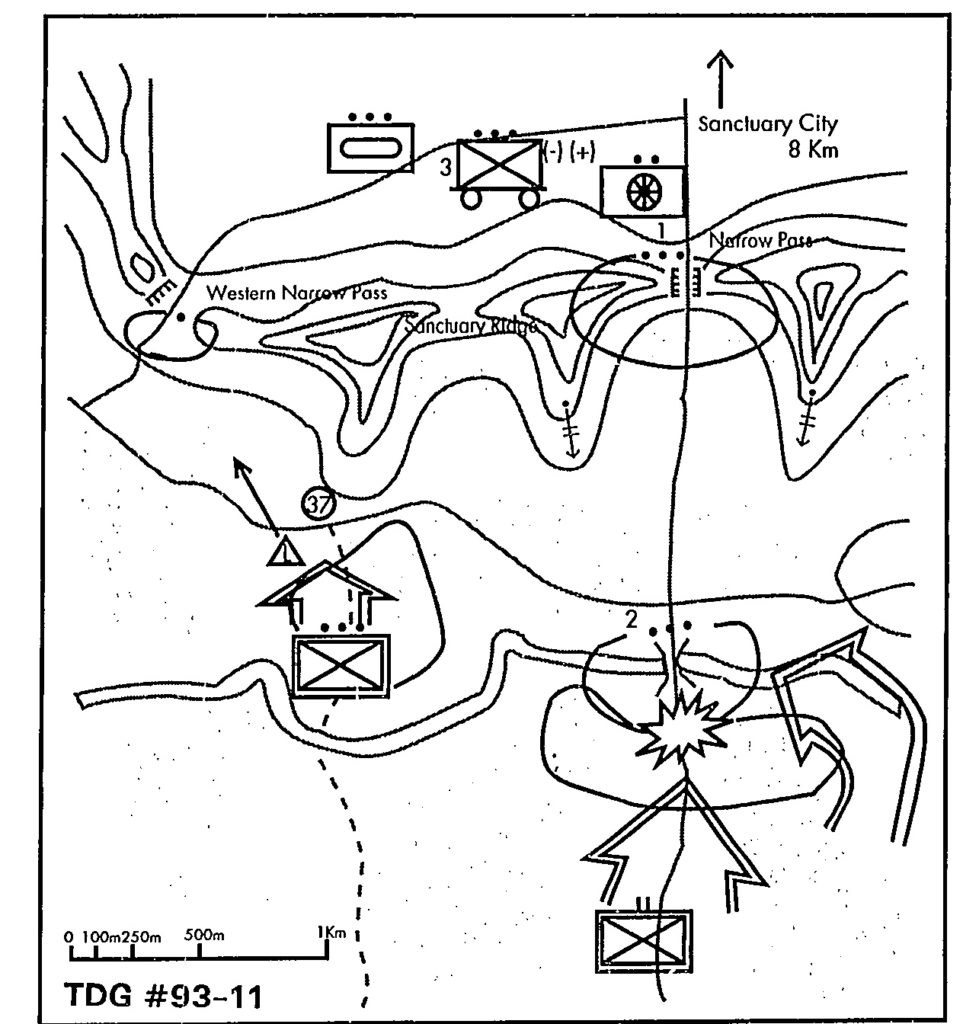 You are the commander of Company H, 2d Battalion, 4th Marines. You are reinforced with two heavy machinegun squads (each squad consisting of an M2HB caliber .50 machinegun and a Mk19 automatic 40mm grenade launcher), a tank platoon, a section of Dragons (attached to your platoons), and enough trucks to carry your company. The enemy has landed a helicopterborne force at Sanctuary City to the north, which friendly forces have surrounded. The enemy is attacking north with ground forces to link up with its helicopterborne force, whose situation is becoming desperate. Your mission is to halt or delay the enemy relief attack for as long as possible in the vicinity of
You are the commander of Company H, 2d Battalion, 4th Marines. You are reinforced with two heavy machinegun squads (each squad consisting of an M2HB caliber .50 machinegun and a Mk19 automatic 40mm grenade launcher), a tank platoon, a section of Dragons (attached to your platoons), and enough trucks to carry your company. The enemy has landed a helicopterborne force at Sanctuary City to the north, which friendly forces have surrounded. The enemy is attacking north with ground forces to link up with its helicopterborne force, whose situation is becoming desperate. Your mission is to halt or delay the enemy relief attack for as long as possible in the vicinity of 
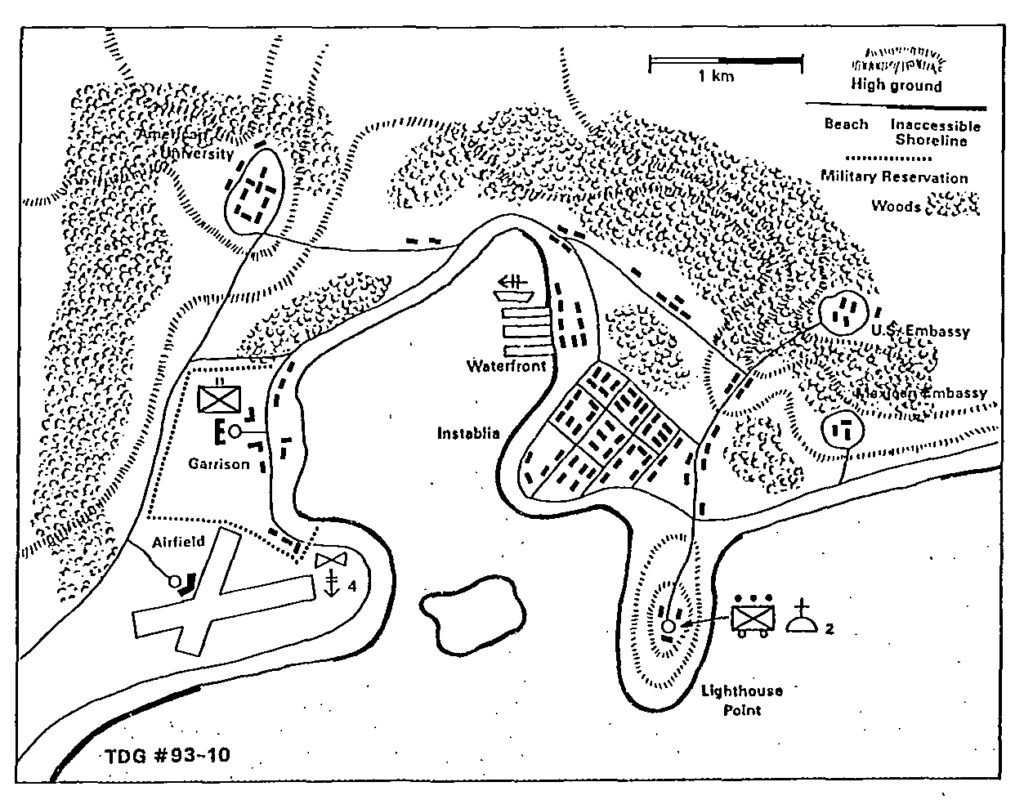 You are the operations officer of 26th Marine Expeditionary Unit, or 26th MEU(SOC), organized as follows:
You are the operations officer of 26th Marine Expeditionary Unit, or 26th MEU(SOC), organized as follows: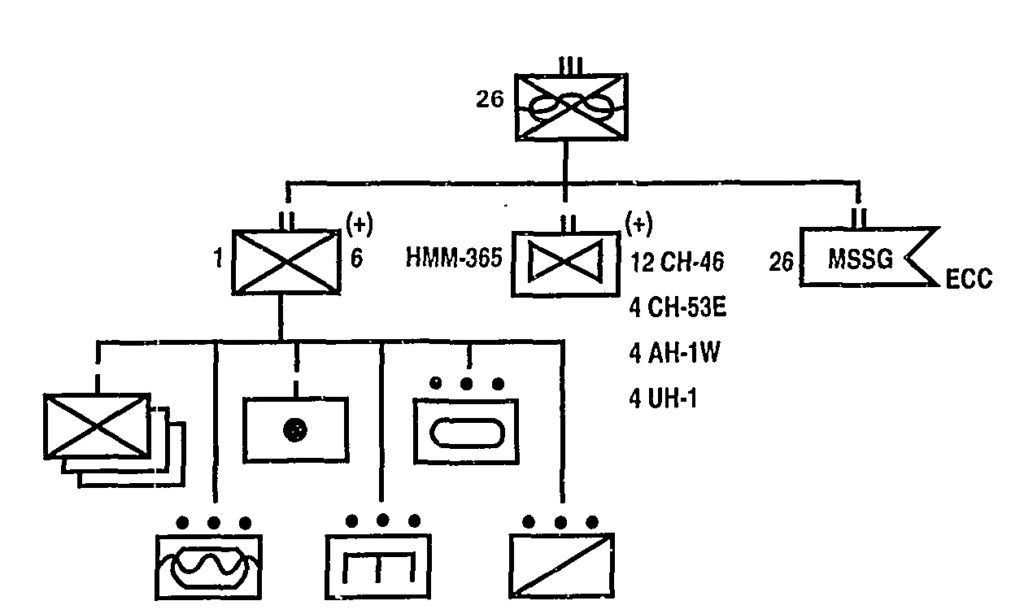 Develop your evacuation plan. It is not necessary to write a complete operations order, but describe your concept of operations, tasks or phases, contingency plans, and coordinating instructions. Provide a sketch of your plan and a brief explanation. Send your solution to Marine Corps Gazette, TDG 93-10, P. O. Box 1775, Quantico. VA 22134.
Develop your evacuation plan. It is not necessary to write a complete operations order, but describe your concept of operations, tasks or phases, contingency plans, and coordinating instructions. Provide a sketch of your plan and a brief explanation. Send your solution to Marine Corps Gazette, TDG 93-10, P. O. Box 1775, Quantico. VA 22134.
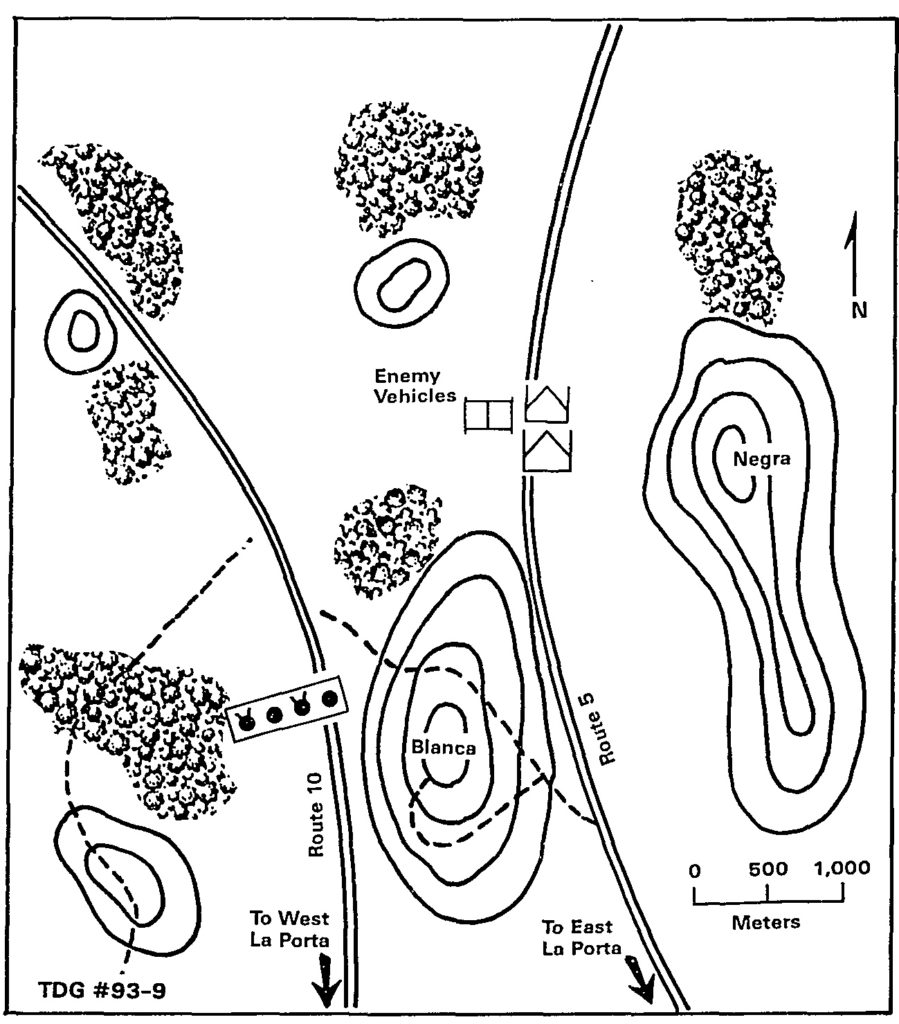 You are the company commander of Company B, 1st Reconnaissance Battalion, (Light Armored). Your company consists of three platoons, each of four LAV-25S, your own LAV-25, your executive officer’s LAV-C2, a section of four LAV-ATs, an attached section of four ATs from Company C. and your company combat trains of a LAVR. three LAV-Ls, and two HMMWVs. A squad of engineers also has been attached. Additionally, you have the platoon of eight LAV-Mortars, equipped with 81mm mortars, in direct support of your company.
You are the company commander of Company B, 1st Reconnaissance Battalion, (Light Armored). Your company consists of three platoons, each of four LAV-25S, your own LAV-25, your executive officer’s LAV-C2, a section of four LAV-ATs, an attached section of four ATs from Company C. and your company combat trains of a LAVR. three LAV-Ls, and two HMMWVs. A squad of engineers also has been attached. Additionally, you have the platoon of eight LAV-Mortars, equipped with 81mm mortars, in direct support of your company.
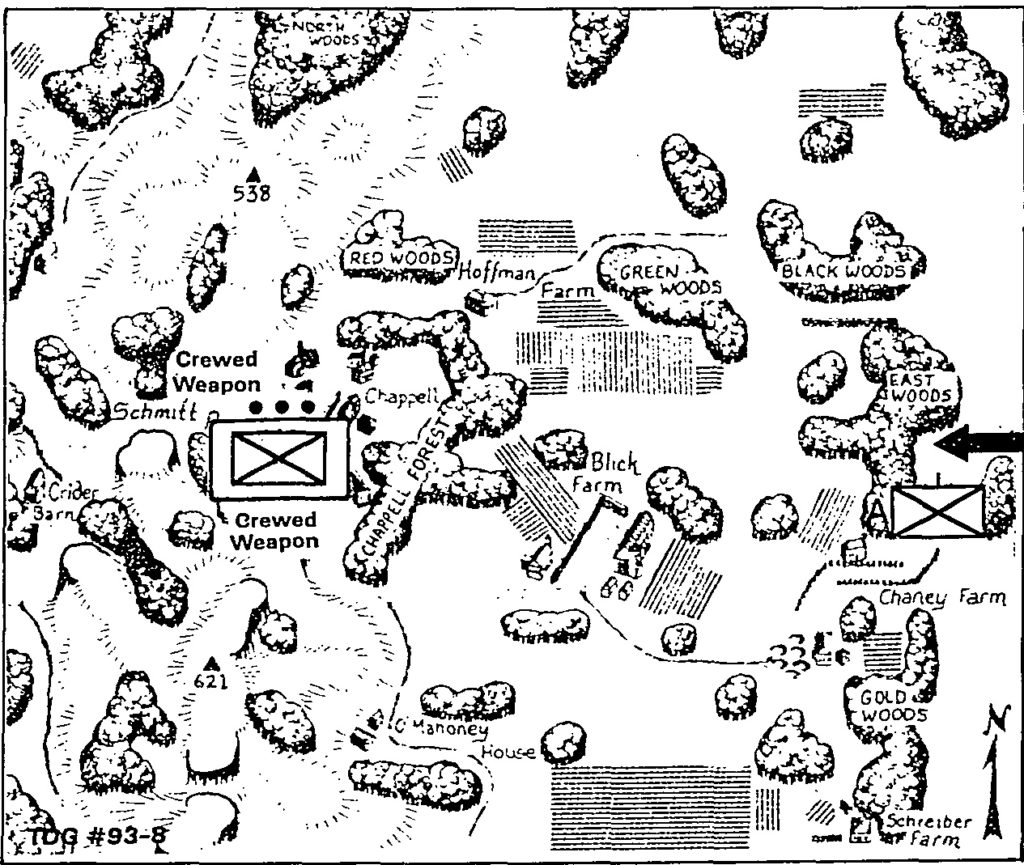 You are the commander
You are the commander 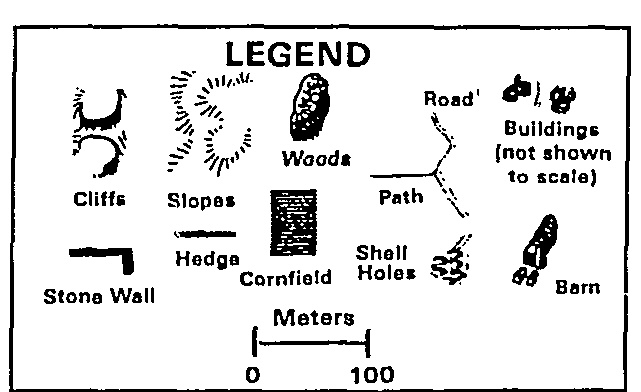 In a time limit
In a time limit 
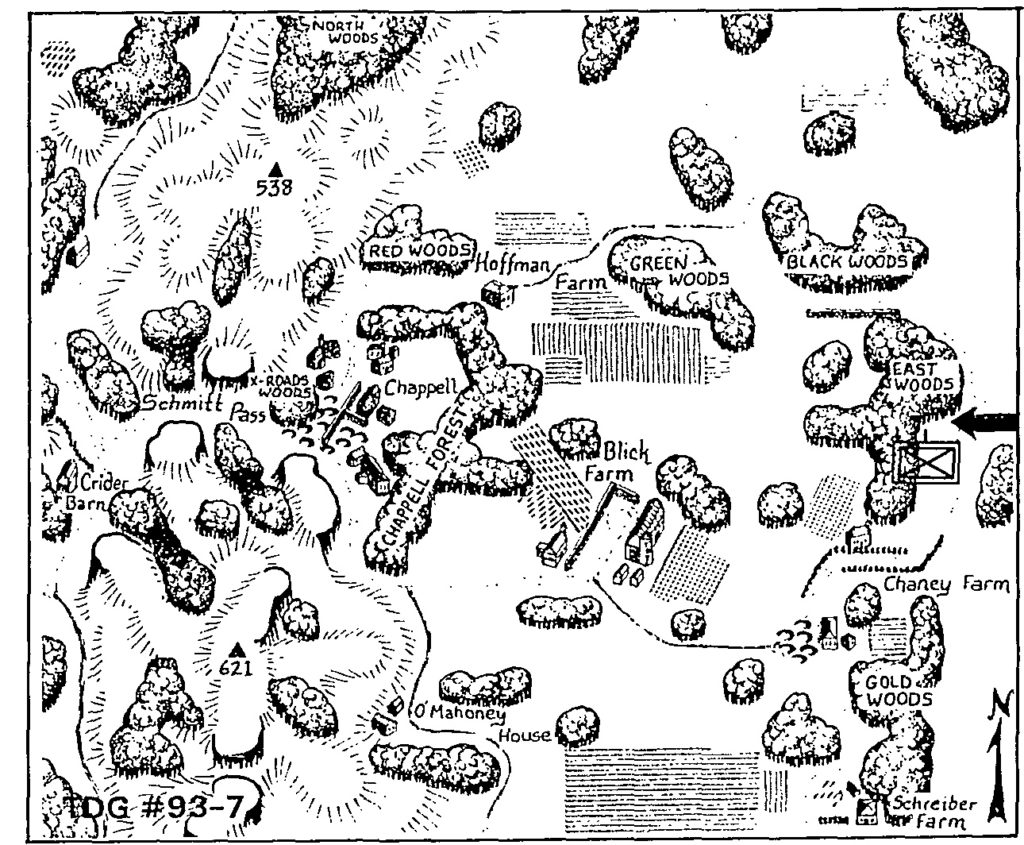 You are the platoon commander
You are the platoon commander 
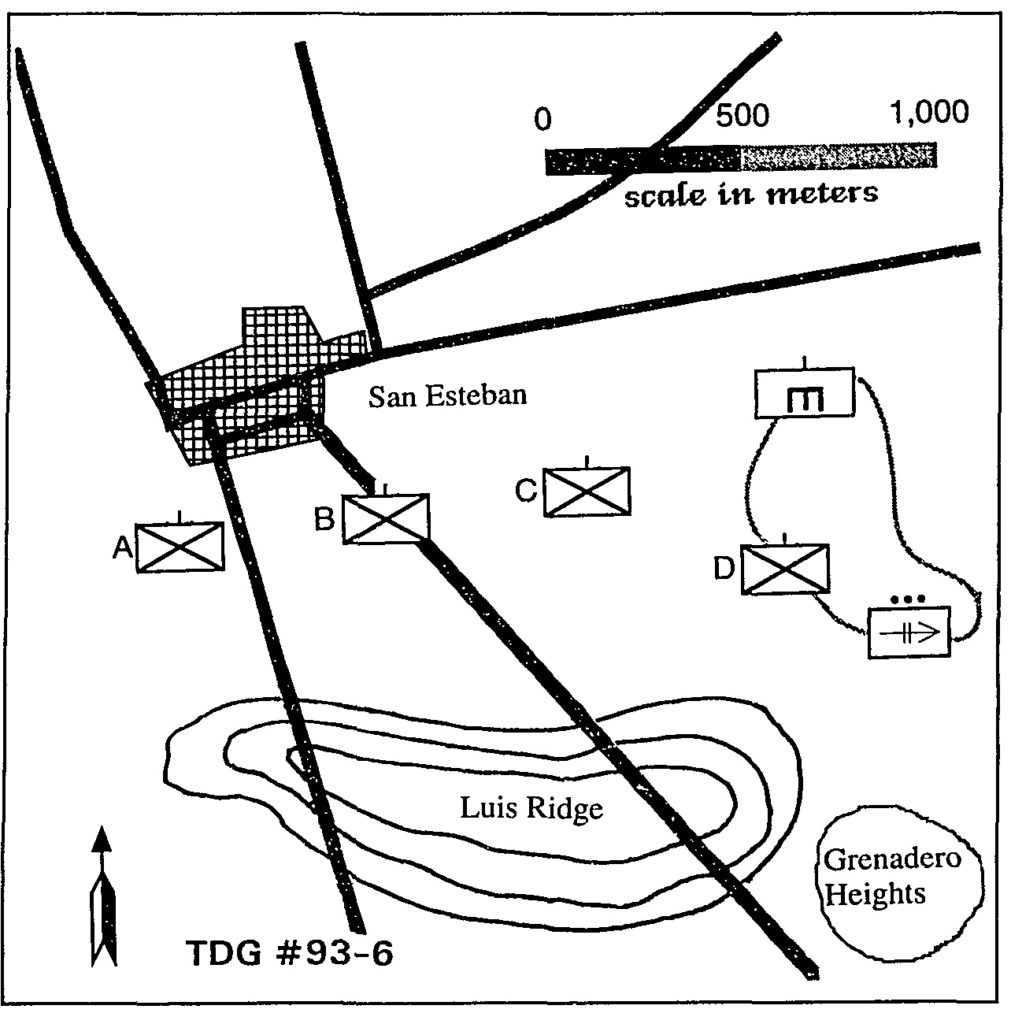 It was the kind of war that nobody, except perhaps a few grizzled veterans of the great conventional wars that had ended more than 50 years before, had ever expected America to fight. We were too civilized, the idealists had claimed. We were too interdependent, the business people argued. And even the hard-headed military thinkers were convinced that modern weapons had made all but the briefest wars impossible.
It was the kind of war that nobody, except perhaps a few grizzled veterans of the great conventional wars that had ended more than 50 years before, had ever expected America to fight. We were too civilized, the idealists had claimed. We were too interdependent, the business people argued. And even the hard-headed military thinkers were convinced that modern weapons had made all but the briefest wars impossible.
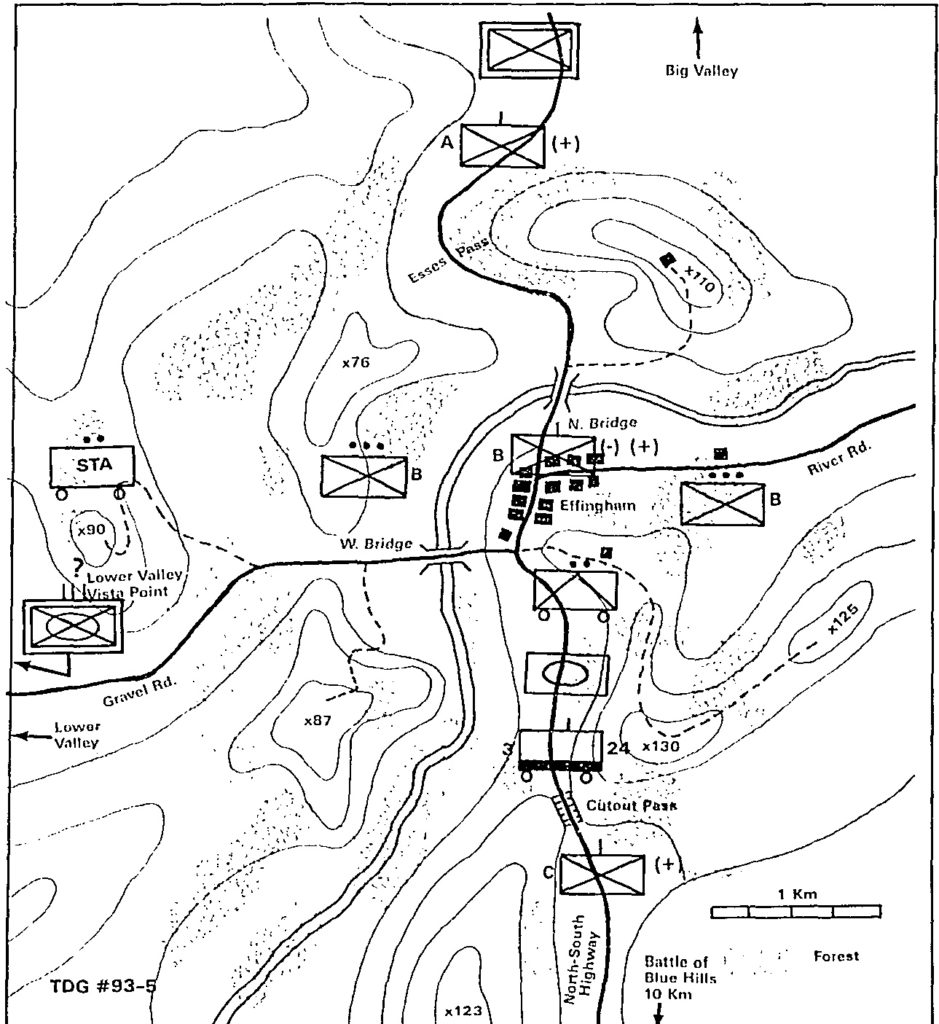 You are the commander of 1st Battalion, 24th Marines. Division has been attacking steadily north against weakening enemy resistance; your regiment has been advancing rapidly on North-South Highway, and 4th Marines are making only slightly less progress on a parallel axis to the west. After battering the enemy
You are the commander of 1st Battalion, 24th Marines. Division has been attacking steadily north against weakening enemy resistance; your regiment has been advancing rapidly on North-South Highway, and 4th Marines are making only slightly less progress on a parallel axis to the west. After battering the enemy 
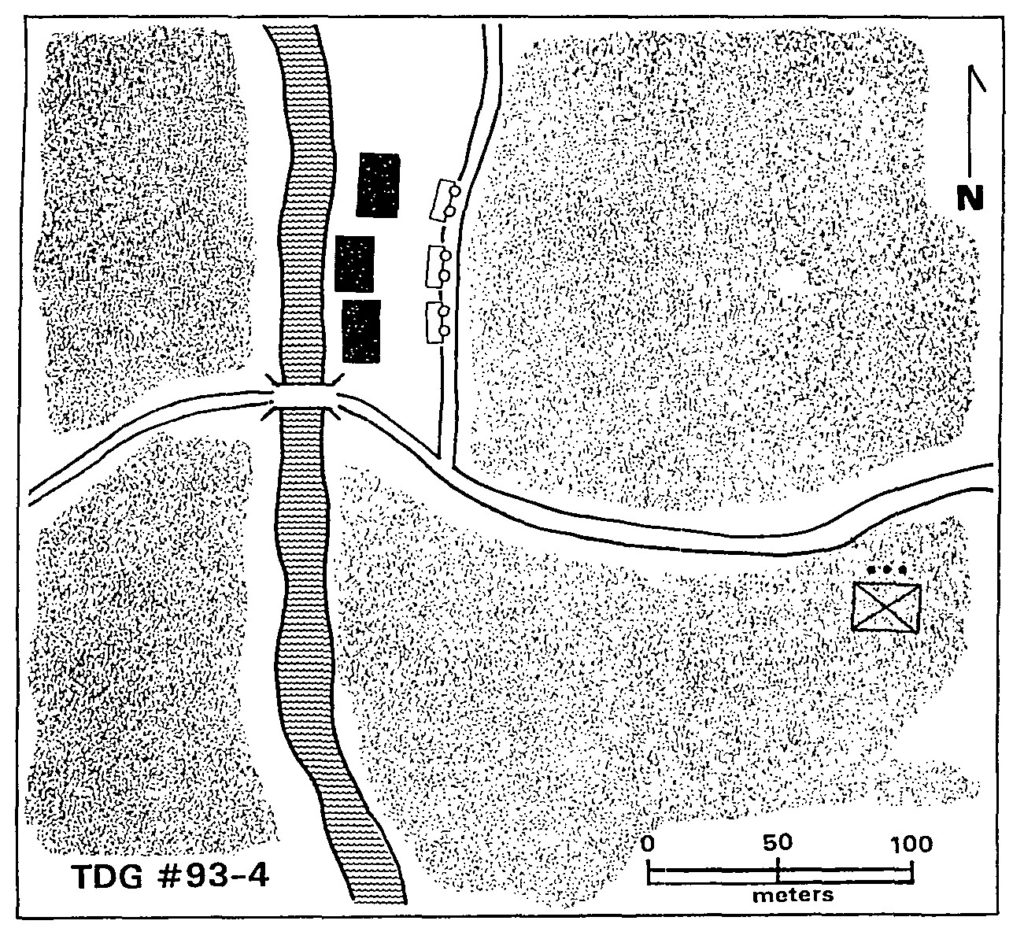 The
The
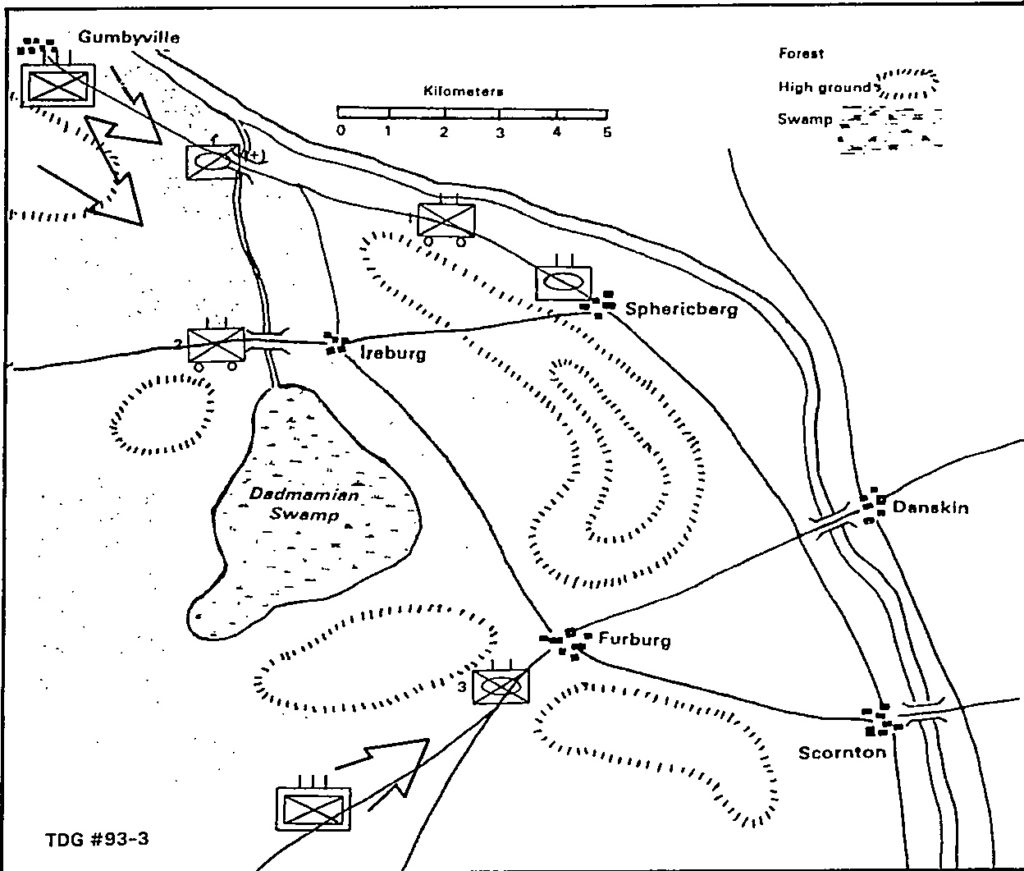 You are
You are 
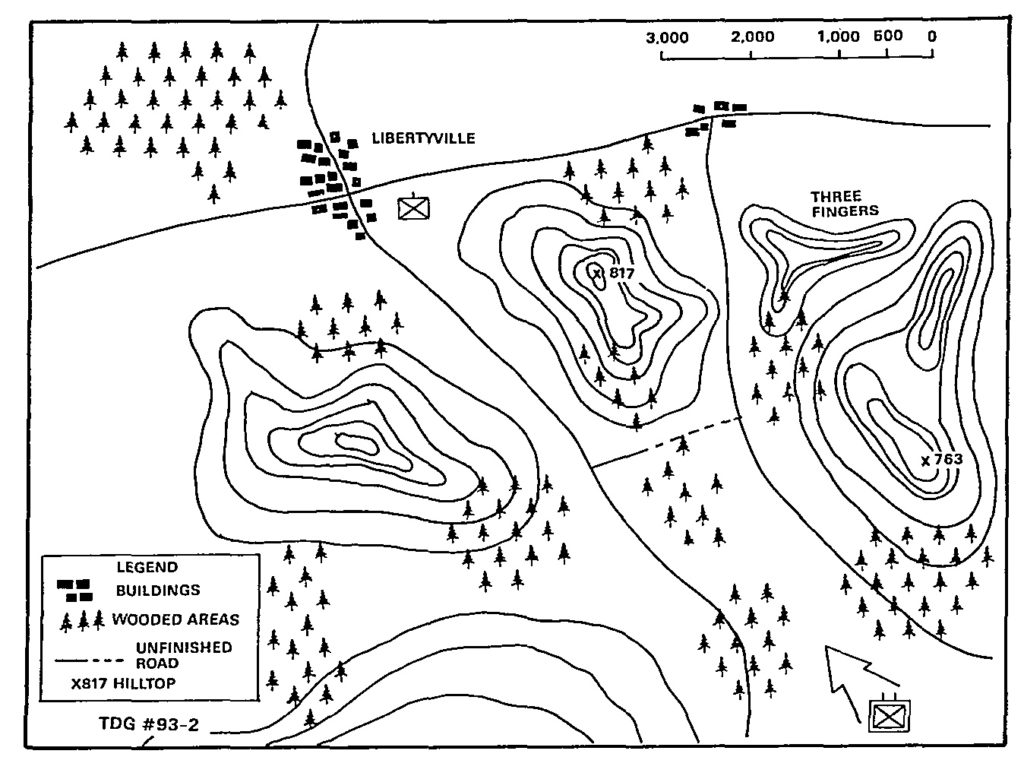 You are the company commander of Company A, 1st Battalion, 2d Marines. Your company consists of three rifle platoons and a weapons platoon mounted on trucks. In addition, you have a tank platoon, two squads of TOWs, and two squads of heavy machineguns on HMMWVs. For the past few days your battalion has taken a pretty good beating from an enemy regiment and has been withdrawing to the north in the face of the enemy advance. Since yesterday, you’ve outrun the majority of the enemy by several miles; however, one of his battalions still doggedly pursues you. It is estimated that this battalion consists of three line companies on trucks, a platoon of tanks, a platoon of BRDM armored reconnaissance vehicles, and a platoon of infantry on BMPs, armored infantry fighting vehicles.
You are the company commander of Company A, 1st Battalion, 2d Marines. Your company consists of three rifle platoons and a weapons platoon mounted on trucks. In addition, you have a tank platoon, two squads of TOWs, and two squads of heavy machineguns on HMMWVs. For the past few days your battalion has taken a pretty good beating from an enemy regiment and has been withdrawing to the north in the face of the enemy advance. Since yesterday, you’ve outrun the majority of the enemy by several miles; however, one of his battalions still doggedly pursues you. It is estimated that this battalion consists of three line companies on trucks, a platoon of tanks, a platoon of BRDM armored reconnaissance vehicles, and a platoon of infantry on BMPs, armored infantry fighting vehicles.